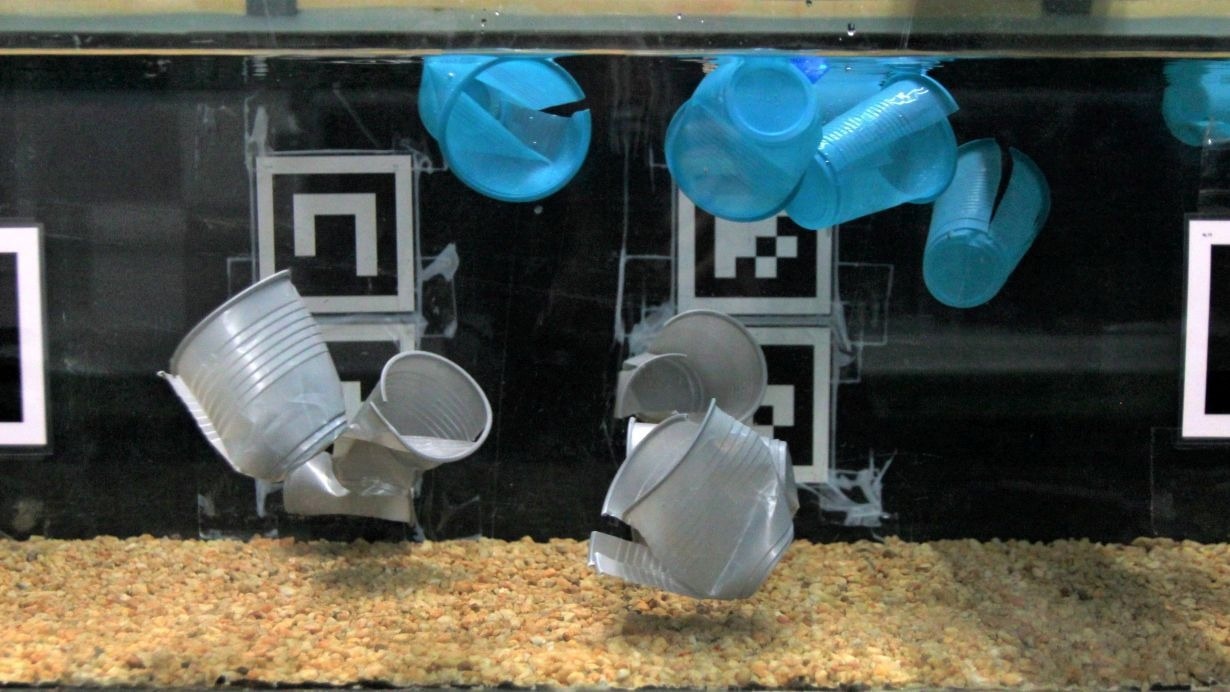Reviewed by Emily Henderson, B.Sc.Nov 4 2022
Scientists and collaborators from Karlsruhe Institute of Technology (KIT) doubt that many plastics have been transported in flowing waters compared to what was thought earlier and are currently developing new modeling approaches.
 The researchers used river models filled with plastic waste for their study. Image Credit: Daniel Valero / Karlsruhe Institute of Technology.
The researchers used river models filled with plastic waste for their study. Image Credit: Daniel Valero / Karlsruhe Institute of Technology.
Be it in drinking water, food, or even in the air: plastic is a global issue, and the full extent of this pollution might transcend what is known so far. Scientists at the Karlsruhe Institute of Technology (KIT), together with collaborators from the Netherlands and Australia, have considered traditional assumptions for transporting plastic in rivers.
The total amount of plastic waste in rivers could go up to 90% greater compared to what was thought earlier. The new outcomes must help enhance monitoring and eliminate plastic from water bodies.
Rivers play a main role in the transport of plastic in the surrounding.
As soon as plastic enters a river, it is transported rapidly and can spread throughout the environment. But, depending on its size and material, plastic can behave very differently in the process. It can sink, be suspended in the water, remain afloat, or be stopped by obstacles.
Dr. Daniel Valero, Study Lead Author, Institute of Water and River Basin Management, Karlsruhe Institute of Technology
Valero is the author of a new study carried out on plastic transport.
But present techniques for evaluating plastic pollution in rivers are primarily based on surface observations.
“This is the only way to effectively monitor large rivers from bridges. However, what happens under the water surface has not been sufficiently verified so far,” says Valero.
Plastic Particles are Transported very Differently
Collectively with his research partners, Valero currently examined the behavior of more than 3,000 particles in the size range from 30 mm to larger objects like plastic cups in flowing waters.
As far as laboratory models are concerned, each particle was monitored in 3D with millimeter accuracy with the help of a multi-camera system, whereby the complete water column from the water surface to the bottom was documented.
With this experiment performed, the scientists could numerically prove that plastic particles act very differently based precisely on where they are situated in a river. Plastic that has been transported below the water surface acts as anticipated by common models for turbulent flows.
“The particles are dispersed like dust in the wind,” stated Valero.
But once the plastic emerges on the water’s surface, the situation gets altered radically.
Valero added, “On contact with the water surface, the particles are caught by the surface tension like flies in a spider's web. Then they cannot escape easily.”
This adhesive effect is just as appropriate for surface transport in rivers as the particular buoyancy of a plastic particle.
Better Models for Visual Monitoring
At the same time, the experiment's outcomes show that it is not sufficient to examine only floating plastic on the surface to evaluate the amount of plastic in rivers.
The bias is significant. If the turbulent character of the transport of plastic particles under the water surface is not considered, then the amount of plastic waste in rivers can be underestimated by up to 90 percent.
Dr. Daniel Valero, Study Lead Author, Institute of Water and River Basin Management, Karlsruhe Institute of Technology
Conversely, the outcomes verify that present knowledge regarding the behavior of particles in turbulent flows is appropriate for the transport of plastic in rivers and that it could help to evaluate the total amount more realistically.
Accordingly, the scientists have measured the ratio between concentrations of plastic particles at the water surface and greater depths with diverse transport conditions.
Keeping this in mind, tracking could still be performed by visual observation of the water surface, and the actual transported quantity could be evaluated comparatively more precisely.
Besides, the outcomes could help in a very practical manner, specifically in the development of new methods for plastic removal:
If you can estimate where the most plastic is, then you also know where a clean-up is most effective.
Dr. Daniel Valero, Study Lead Author, Institute of Water and River Basin Management, Karlsruhe Institute of Technology
Journal Reference:
Valero, D. et al. (2022) The key role of surface tension in the transport and quantification of plastic pollution in rivers. Water Research. doi.org/10.1016/j.watres.2022.119078.